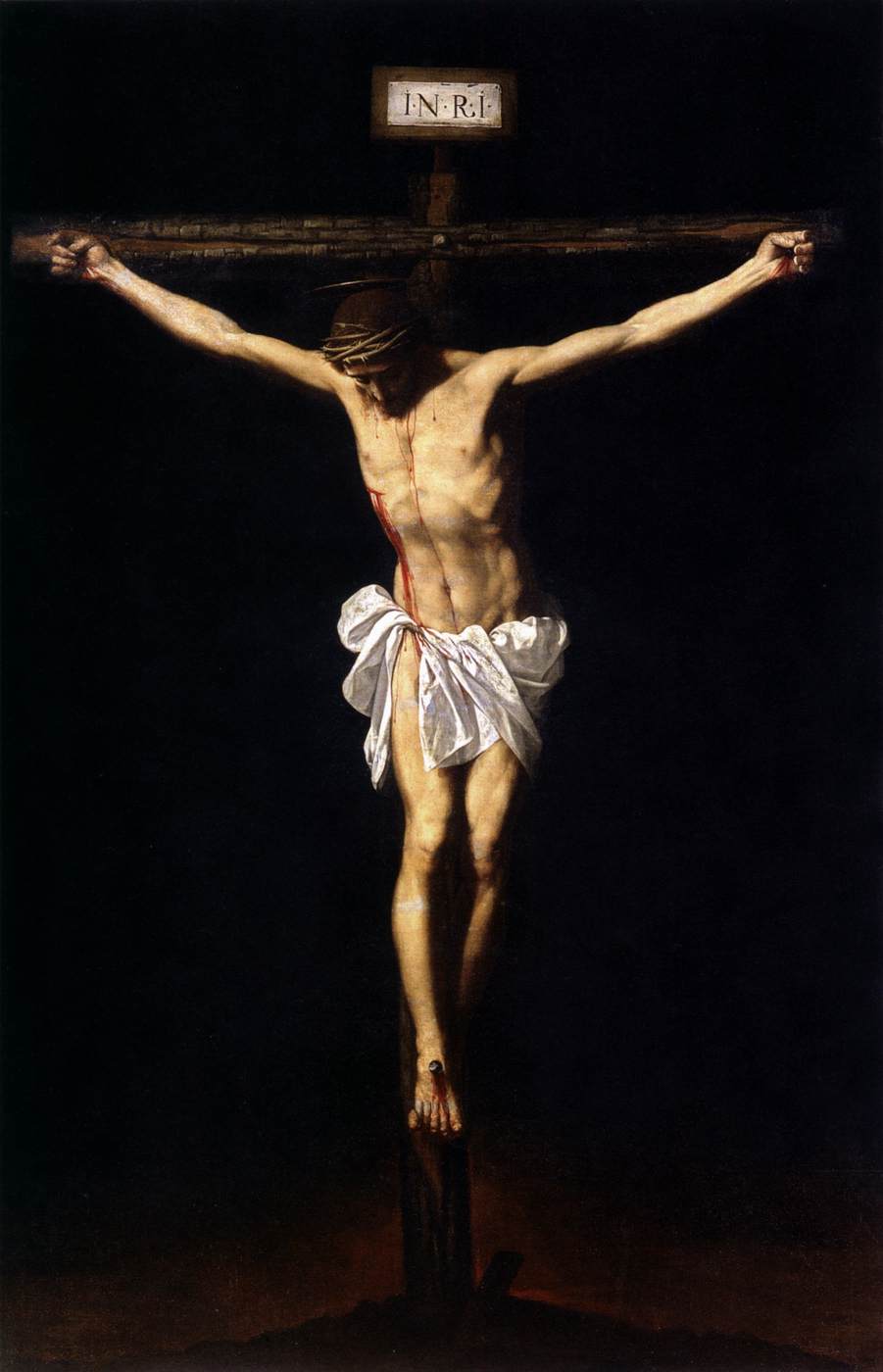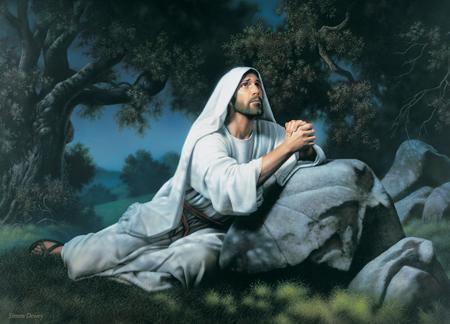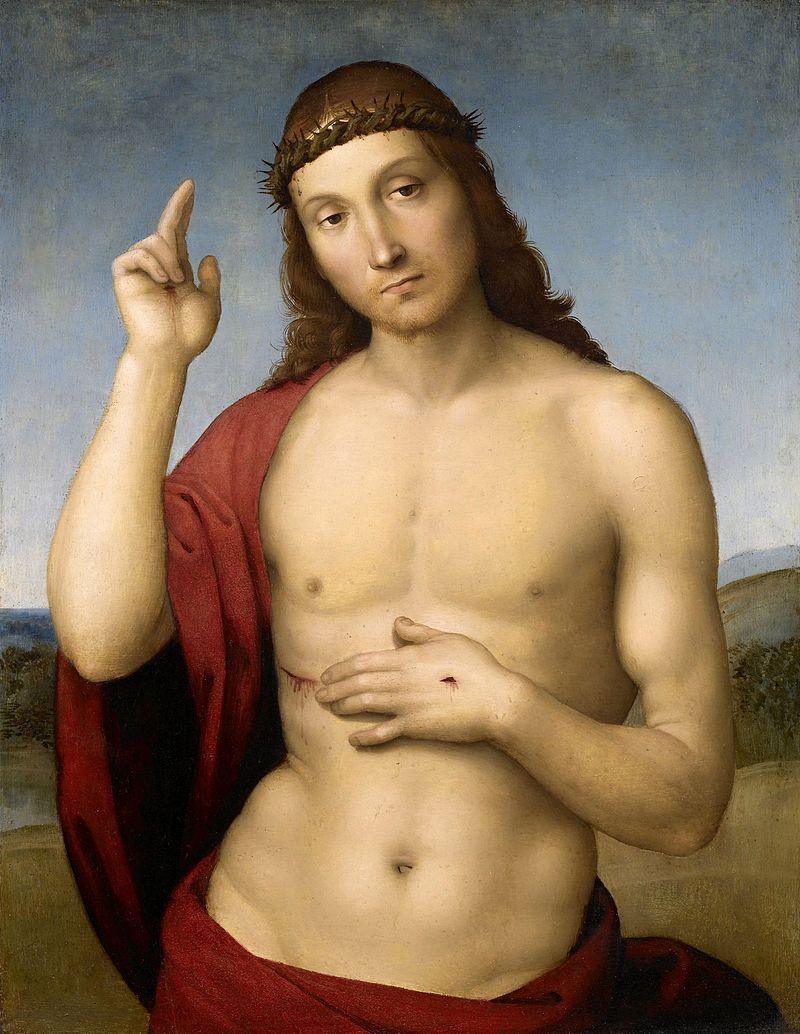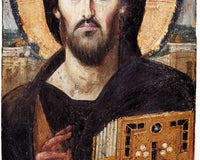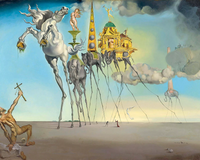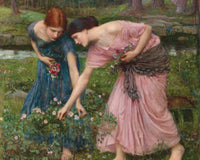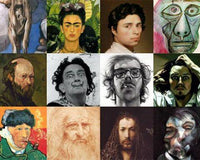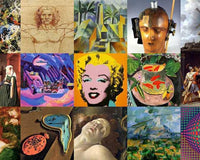How many times have you imagined being in the place you always see in your favorite painting? For instance, sitting down for a drink in that Parisian café, or running through those green fields with blue skies.
Although it seems impossible, the settings of some of the most famous modern masterpieces exist in real life and even welcome visitors. By visiting these distant yet familiar sites, lovers of modern art can experience their favorite paintings outside of museum walls and the pages of art history books. You can understand what the painter felt and why they chose to capture that place in time.
No.1 Café Terrace at Night - Vincent Van Gogh

Café Terrace at Night was one of the first night scenes painted by Van Gogh during his stay in Arles. This painting of colorful outdoor views is a picturesque work, the vision of a relaxed spectator enjoying the charm of his surroundings without any moral concerns.
The original Café Terrace, which inspired this painting, still exists in the Place du Forum, Arles, a picturesque village in the south of France, at the very place where Van Gogh painted this masterpiece.
The Place du Forum in Arles was the historical center of the city, as for many other forums in Roman cities. It originally extended over a large proportion of Arles from the current Boulevard des Lices northward to the river itself.
Van Gogh, while in Arles, painted Café Terrace at Night in mid-September 1888. This was the period when Van Gogh moved to the town of Arles, attracted by its seemingly similar light to that found in Japan.
This period of his time is fondly remembered as the Arles period. It was considered that Van Gogh was at his most creative during this part of his life.
This was the first of a series of paintings in which he used starry backgrounds, for which a night sky is essential. His observation of stars was the result of Van Gogh's new attraction to religion. Religion seemed to fill the void of love.
Van Gogh set up his easel at the northeast corner of the Place du Forum, facing south toward the lantern-lit terrace of a popular café: Café Terrace. He used an industrially prepared canvas size 25 to execute Café Terrace at Night. Van Gogh employed a large amount of contrasting colors and tones for this painting that brings a pulse of colors that challenge the increasingly dark night sky.
Nowadays, tourists can see the same café in the Place du Forum and enjoy daytime and nighttime entertainment: there are many restaurants and also the famous Nord Pinus hotel.
Buy a reproduction of Café Terrace at Night in the online store of Kuadros
No.2 American Gothic - Grant Wood

In 1930, Grant Wood toured the small town of Eldon, Iowa, and saw a small white house with a large Gothic window. Inspired, Wood quickly sketched the house and returned to Cedar Rapids to paint American Gothic.
Since its completion, the painting has become an American icon and has served as the backdrop and model for countless parodies, inspiring everything from advertisements to magazine covers and cartoons. The original part of the house that contained the two Gothic windows was built in 1881-82 by Catherine and Charles Dibble. Because of this, the house is listed on the National Register of Historic Places as the Dibble House. Mr. Dibble had a livery stable in Eldon. He seems to have lost the house later, which was sold for back taxes. Over the years, the house has changed hands with owners living in the house or maintaining it as rental property. The State of Iowa is the current owner, having acquired it in 1991 when the then-owner Carl E. Smith donated it to the State Historical Society of Iowa.
After studying art in Europe during the 1920s, the artist returned home and created this work as a celebration of Midwestern culture in the regionalist style.
Wood was in Eldon for an art exhibition held by Edward Rowan, who was the director of the Little Gallery of Art in Cedar Rapids. Rowan had taken a great interest in Eldon and believed it was an ideal location to conduct an experiment to bring art to remote rural areas. It is unclear why Rowan chose Eldon for his experiment, apart from having an acquaintance from Eldon, John Sharp.
Wood's sister named Nan and Cedar Rapids dentist Byron McKeeby were the models, and the figures dressed in outfits inspired by old family photographs of Wood, are simply meant to represent typical small-town Americans. Wood chose the house not because it was beautiful, but because he was captivated by the strange combination of its ornate details and simple materials.
The house still stands to this day, is listed on the National Register of Historic Places, and is visited by thousands of people each year.
Buy a reproduction of American Gothic in the online store of Kuadros
No.3 The Japanese Bridge - Claude Monet

The garden of the famous Impressionist artist Claude Monet in Giverny has been one of the must-visit places for all art lovers visiting France. It is a flourishing domain where the artist had spent the last forty years of his life, digging, planting, weeding, and painting.
In May 1883, Monet and his family moved to Giverny, a small village about eighty kilometers west of Paris and across the Normandy border. He rented a large house that came with a large garden with alleys of cypress trees and orchards of various fruit trees, and he immediately began redesigning the property.
In November 1890, he finally managed to buy the house. Now, on his private land, he embarked on a much more ambitious gardening plan: he hired two full-time gardeners, which eventually grew to six, built a large greenhouse solely to propagate species and store bulbs, and rented a separate garden, not far from his house, to move all the vegetables and fruits, so he could dedicate his own garden solely to his flowers.
Once he was happy with his flower garden, he began to look across the road where there was a marsh with a small pond used by local farmers to water their livestock. It seemed like a perfect place to plan his dream of having an Eastern floating garden. But it was not easy. First, the land was separated from the estate by a railway and a main road. Second, the locals objected to his plan with such fervor that, joined with the authorities, they delayed the acquisition process as much as possible.
By overcoming the resistance of the locals who were distrustful of introducing foreign plants into the region, Monet obtained approval to expand the pond by diverting water from the Epte River. He surrounded the basin with a lively arrangement of flowers, trees, and shrubs, and the following year filled it with water lilies. He added a Japanese-style wooden bridge in 1895, and a few years later began to paint the pond and its water lilies, never stopping, turning them into the obsessive focus of his intense work for the next quarter-century.
Buy a reproduction of The Japanese Bridge in the online store of Kuadros
No.4 Houses of Parliament at Sunset - Claude Monet

In October 1834, a devastating fire destroyed the old palace, which had been the seat of Parliament since 1512. The palace was also a royal residence since the reign of William the Conqueror. Only Westminster Hall, the Chapel of St. Mary Undercroft in the crypt, and the Jewel Tower (built during the 14th century where jewels and gold were kept) survived the fire.
Of the 97 projects submitted during the subsequent competition for the reconstruction of the Palace, the winning architects were Charles Barry and Augustus Welby Pugin. By 1847, the building was virtually completed with 1,200 rooms, 11 courtyards, and 2.1 miles of corridors. The sumptuous façade offers an impressive panorama, where you can see the golden pinnacles and statues of English kings reflected in the Thames. The Victoria Tower, the largest and tallest tower, is located at the southwest part of the Palace, where a copy of all the laws of Parliament is kept. On the northern side of the palace stands the world-famous tower, Big Ben.
During his stay in Giverny, Monet made frequent trips to London. Here, he painted 25 studies of the Palace of Westminster that experimentally explored the changing color of the sky and its consequent reflections in the River Thames, an artistic task that turned out to be his "obsession, joy, and torment." It is believed that Monet completed these pieces from a terrace on the second floor of St. Thomas' Hospital. While seeing the gleaming Houses of Parliament from this exact location may be difficult today, a walk along the riverbanks and bridges offers nearly identical views.
Today, the Palace of Westminster can only be visited on Saturdays or during July and August. To get tickets, you can queue and obtain them on the same day of your visit. However, we recommend arriving early to avoid waiting too long.
Buy a reproduction of Houses of Parliament at Sunset in the online store of Kuadros
No.5 Luncheon of the Boating Party - Pierre-Auguste Renoir

La Maison Fournaise is a restaurant and museum located on the Île des Impressionnistes in the Seine in Chatou, west of Paris. In 1857, Alphonse Fournaise bought a plot of land in Chatou to open a boat rental, a restaurant, and a small hotel for the new tourist trade, making his surroundings, La Maison Fournaise, a restaurant on the island of Chatou, a popular destination for dedicated fans of Impressionism. Located on the outskirts of Paris, La Maison Fournaise offered boat rentals and picturesque dining in the late 19th century. During this time, Renoir and other French painters regularly visited the establishment, as evidenced in Luncheon of the Boating Party. While the restaurant closed its doors in 1906, it reopened in 1990. The restaurant was one of Pierre-Auguste Renoir's favorites, who painted scenes of the restaurant, including Luncheon of the Boating Party.
Luncheon of the Boating Party is one of Pierre-Auguste Renoir's most famous works. Initially exhibited at the Seventh Impressionist Exhibition in 1882, the large-scale painting has been praised for centuries.
Today, La Maison Fournaise remains in business, inviting you to "relive the Impressionist joys" while dining on its famous riverside balcony.
Buy a reproduction of Luncheon of the Boating Party in the online store of Kuadros
No.6 The Scream - Edvard Munch

¨ I was walking along the road with two friends, the sun was setting, and suddenly the sky turned red like blood, I stopped, feeling exhausted and leaning against the fence, there was blood and tongues of fire in the blue-black fjord and the city. My friends kept walking, and I was there trembling with anxiety and felt an infinite scream passing through nature.
It is believed that the road described by Munch is Valhallvegen Road, a viewpoint located on Ekeberg Hill in Oslo, the capital of Norway. The site of the painting is a point next to a road called "Valhallveien." The hill is known as Ekeberg Hill. This road was a popular spot for Oslo citizens to view the city. It is said that the view just before the 180-degree turn on Valhallveien was where Munch found inspiration for "The Scream."
From 1893 to 1910, the Norwegian printmaker and painter Edvard Munch created his famous series, The Scream. Composed of four works on cardboard, this collection features a striking figure as its theme. While the medium, color palette, and attention to detail vary from piece to piece, each one presents the same setup: a bridge spanning a blue body of water, contrasting with a dark sky. This now-famous setting was inspired by one of Munch's sunset walks, as he described in his diary: I painted this image, I painted the clouds like real blood, shrill color. This became The Scream.
Buy a reproduction of The Scream in the online store of Kuadros
KUADROS ©, a famous painting on your wall.


